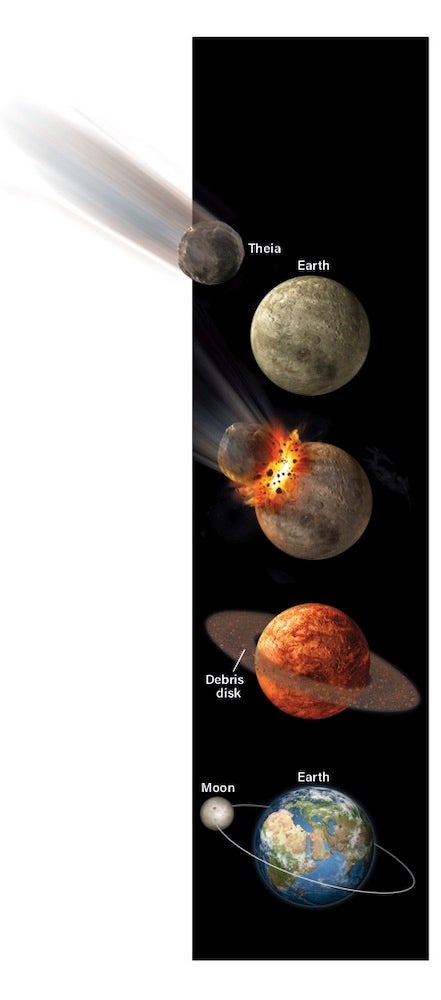Q: If the Giant Impact Hypothesis is correct and the Moon is made from Earth and Theia (the Mars-sized object that collided with Earth), what happened to the rest of Theia after the collision?
A: In the 1970s, Donald R. Davis and I suggested that the Moon was formed when a Mars-sized planetesimal, later called Theia, struck a newly formed Earth about 4.5 billion years ago. At the time, the Giant Impact Hypothesis had very little to say about what happened to the impactor itself.
In the years since, many researchers have modeled what the impact may have looked like. After slamming into Earth, the outer rocky shells of both Earth and Theia were blasted into a disk of debris around our planet. From this disk, the Moon coalesced; thus, models indicate most of Theia’s material ended up as part of the Moon. Any iron core that Theia may have had was consumed by Earth’s own core.
The Giant Impact Hypothesis is, as your question alludes to, not yet settled. One issue with the hypothesis is that samples of lunar rocks reveal that the Moon and Earth have very similar ratios of isotopes — the equivalent of an elemental fingerprint for celestial objects. For example, the ratio of oxygen-16 to oxygen-18 is about the same in the Moon as in Earth. These results are surprising, since no other major bodies in the solar system are that alike, especially in oxygen concentrations. A few years ago, simulations seemed to show that Theia had actually originated in the distant solar system, complicating the hypothesis further.
It is true that meteorites from other parts of the solar system bare no isotopic resemblance to either Earth or the Moon. But a potential explanation comes in the form of a rare group of meteorites called enstatite chondrites, which are also nearly identical to Earth. These meteorites may have been the building blocks of Earth and, as a recent paper indicates, Theia as well. Additionally, the simulations are somewhat questionable and Theia may have originated more locally.
This suggests that the former planetesimal is a long-lost twin of our planet. For now, scientists must rely on models to solve the puzzle of Theia, but if a stray meteorite from the collision is found, it may provide the final clues needed to put the mystery to rest.










